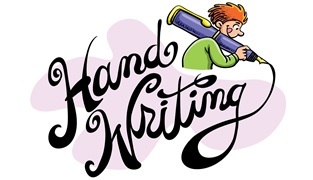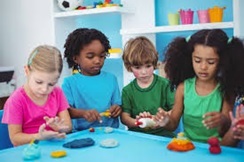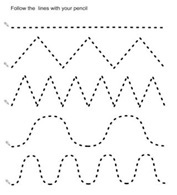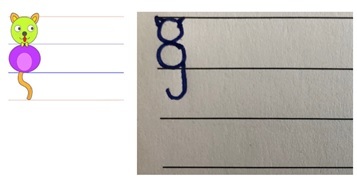Latest News
Handwriting
Posted on: 01/05/2020
This is a great time to master beautiful handwriting before children are back at school.
Your child may be starting out and learning the formation of letters, learning new joins, developing a more consistently even joined style with pencil, or perfecting a joined-up style with pen.
Handwriting practice can be relaxing, it can help with spelling and it will make a child proud of the presentation of their work!
Fine Motor Skills
Take a look at these fine motor activities to help children build up strong muscles in their hands - ready for writing. These activities look fun for all age groups!

Pencil Control
Before children can learn letters, they need to have mastered some basic pencil control movements. You might like to print out these sheets or copy the patterns onto paper (lightly in pencil) for your child to trace over using different writing tools such as pencil, pen, crayons, felt tips or marker pens.

Letter formation: Print
Children need to form letters correctly so that they can develop a clear writing style which will later develop into a joined-up script.
All letters start from the top except ‘e’ and ‘d’.
Letters can be grouped into sets by their formation. Have a look at each set and notice what the letters have in common:
Positioning your letters on the lines of your paper:
The ‘cat’ can help children make sure that letters are the correct size, and that they are sitting correctly on the lines of their paper. You can draw a cat onto the lined paper as a helpful reminder. There are lots of free handwriting resources which you can find on the Twinkl website - click here and search 'handwriting'.


Click here for more examples.
If you have access to a printer at home, you might find this paper useful for handwriting practice.
Letter Formation: Joining
Once the children are able to print letters, they will be naturally ready to start to join up their letters. First in pencil, so they can correct mistakes and develop confidence; then once they are writing with a consistently clear and evenly-sized style, they move onto pen.
At school we follow the Nelson handwriting scheme. Below is an overview of the joins that are taught. In the scheme, they mention ‘break’ letters (letters which the children do not need to join). However we do show the children how these letters could be joined and that they might want to do this when they are ready.
In this scheme there are four types of join (learnt in a particular order) which require different hand movements:

How to join letters (Nelson Handwriting Scheme)
TOP TIP: Why not double up on handwriting and spelling learning?! Practise writing your year group’s spellings and put them into sentences.
Fun Fonts
Learning to write can be so much fun and you can produce beautiful fonts and pictures with writing. Have a go at Miss Pike's name writing activity (parents will be emailed a video link)!

Further information for parents
Parents, you may find the document below useful. It contains lots of great ideas and information about handwriting development. Please don't feel that you need to read or use the whole document but you may find it interesting to scan through and perhaps try one or two of the activities from page 5, 7 or 9.

